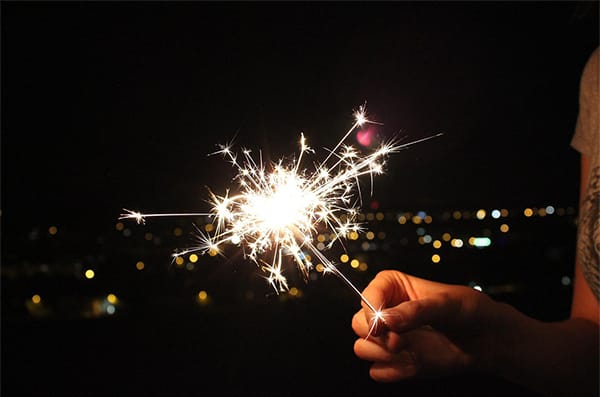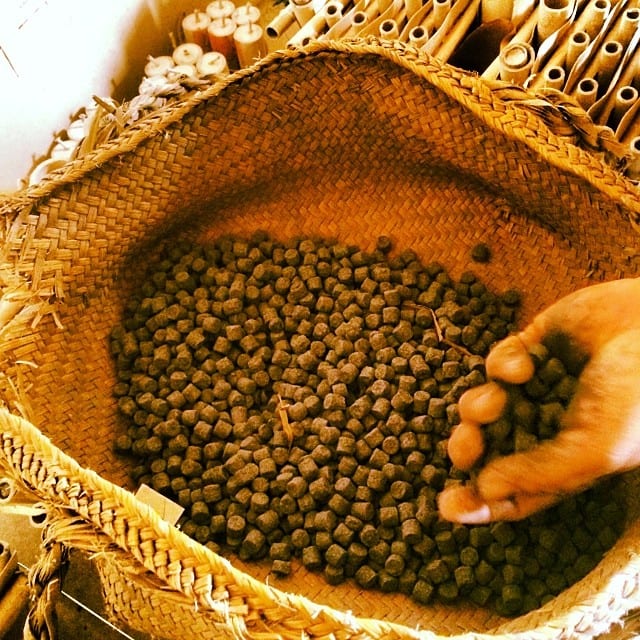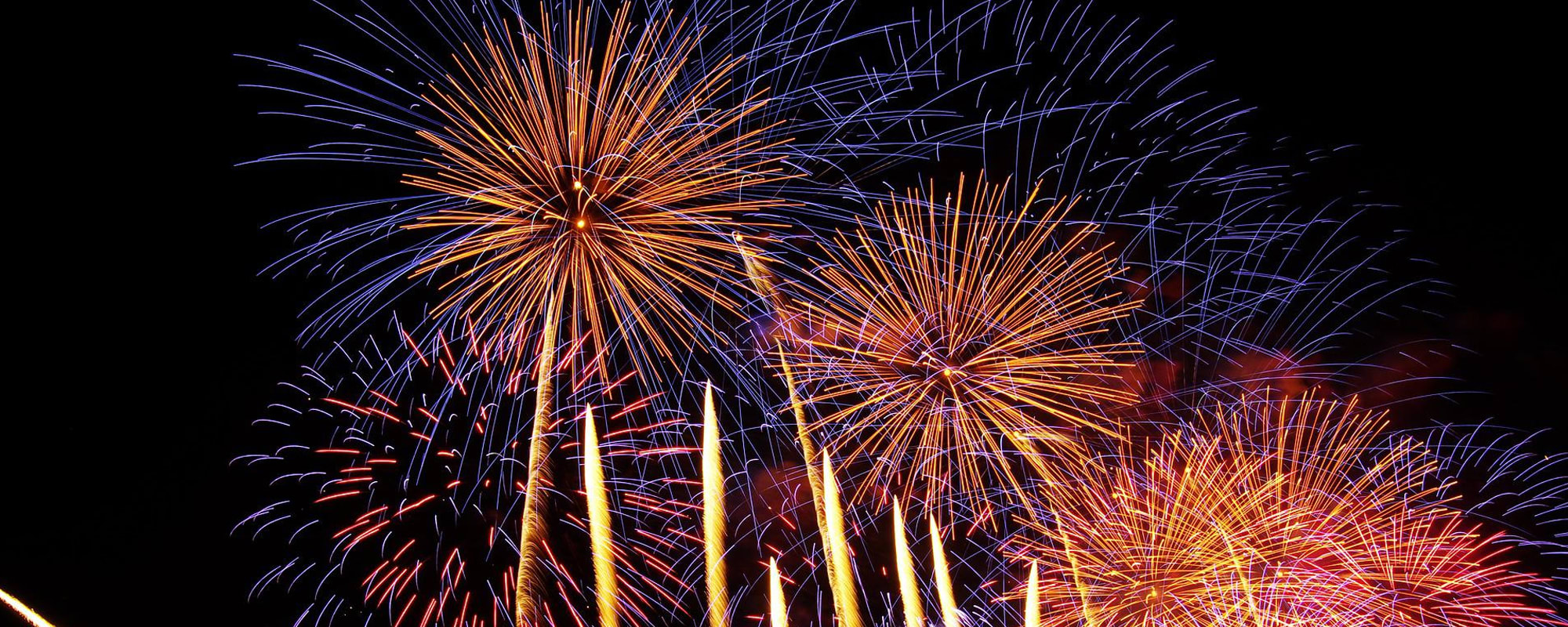Learn about the pyrotechnic science of fireworks, including how they achieve their characteristic light, color and sound effects, how they’re made, the chemistry behind their colors and the craft behind their patterns.
What comes to mind when you think about STEM? Something along the lines of scientists in lab coasts, advanced technologies like robotics and AI, impressive feats of mechanical and electrical engineering and complex equations? That all checks out, but what about fireworks? Yes, fireworks!
Pyrotechnics is more than just a stage stunt at massive concerts; it’s the combination of chemistry and craft behind a wide range of safety and entertainment applications ranging from safety matches, distress flares, automotive airbags and the explosive bolts used in parachute deployment systems and missile stage separation devices to cap guns, model rocket motors and — you guessed it — fireworks. And while pyrotechnics’ mission-critical applications are obviously paramount, fireworks are undoubtedly one of the most popular applications of this explosive branch of chemistry.

Fireworks’ thunderous explosions and striking optics have made them an international symbol of celebration and a beloved part of holidays including American Independence Day, Christmas, Eid ul-Adha, which coincides with the end of Hajj, the annual Islamic pilgrimage to Mecca in Saudi Arabia, and New Year’s Eve. As such, there are now hundreds of chemical formulas for fireworks and nearly as many different varieties, ranging from novelty or “safe and sane” fireworks like snap pops, smoke balls, snakes and sparklers to ground fireworks like fountains and firecrackers, assorted fireworks including rockets, roman candles, sky flyers and spinners and aerial fireworks like shells, cakes and repeaters that create dazzling light and sound effects including ring shell, Saturn shell, brocade, chrysanthemum, palm tree, spider and willow patterns along with crackles, whistles and BOOMs.
Firecrackers — a basic ground firework that’s been around for hundreds of years in its current form and definitely doesn’t qualify as “safe and sane” despite the sums of us that likely grew up playing with them — provide an excellent example of the science behind fireworks’ loud explosions. Firecrackers are simply small, tightly wrapped paper or cardboard tubes filled with black powder and a fuse, which is why all they do is explode with a flash of light and a loud bang. The heat generated by the burning fuse excites the chemicals’ electrons and the combustion allows them to release that excess energy as light.2 Firecrackers are one of the relatively few modern fireworks that never incorporate any color effects, but some include aluminum powder to create a brighter explosion for added visual interest.
Although black powder is directly responsible for fireworks’ characteristic “BOOM,” even sparklers use black powder; it’s just proportioned to burn slowly rather than exploding like a firecracker. Sparklers are comprised of fuel (charcoal and sulfur), an oxidizer (potassium nitrate), a metal powder that becomes incandescent and sparkles when burned and a binder like sugar or starch.3 They can also contain chemicals that generate a color effect. When combined with water, this pyrotechnic formula creates a slurry that manufacturers can dip sturdy metal wires into. When dried and lit, sparklers exhibit an extended burn time of up to a minute and produce an extremely bright ball of sparks that slowly travels the length of the sparkler as it burns. And even though these slow burning, “safe and sane” fireworks are on the opposite end of the spectrum as impressive aerial fireworks, the ways in which they generate bright, sparkling and potentially even colored light are exactly the same.
Just like sparklers, ground fireworks like fountains, assorted fireworks like sky flyers and spinners and even aerial fireworks often incorporate metal powders to create sparkles and flashes. There are several different metals commonly used in pyrotechnic formulas and they each burn at different speeds and in different ways and, as such, produce various colors and intensities of light. For example, hardened steels typically produce yellow-orange sparks while regular steel produces bright orange sparks, aluminum, magnesium and titanium all produce white sparks, and if iron is added to one of those metals, it’ll produce gold sparks. In addition, adding various types of charcoal to pyrotechnic formulas can generate orange and red sparks.2,4
To further amplify their visual effects, fireworks also frequently incorporate a variety of chemicals that release different wavelengths of light when burned. For instance, adding strontium or lithium salts produces red light, calcium salts produce orange light, sodium compounds produce yellow light, barium compounds combined with a chlorine producer generate green light, copper compounds combined with a chorine producer generate blue light and strontium combined with copper produces purple light.4

To generate the sound portion of fireworks’ light and sound display, pyrotechnic formulas have to produce a large amount of gas in a very short amount of time. The easiest sound effects to achieve are “BOOM” and “BANG.” These sounds result from energetic chemical formulas housed in confined spaces with nowhere for the gas to go. When the formula is ignited, the pressure inside the container builds until it explodes, producing a loud report. Whistling sounds are achieved by adding a small hole to the firework container. These small holes allow a portion of the pressurized gas to escape, which launches these types of fireworks into the air as well as produce a whistling sound, and the velocity of the gas and the size of the opening have a direct effect on the pitch and the sound of the whistle.

The most prevalent aerial fireworks are shells made of pasted paper and string formed into cylinders for professional display fireworks and spheres for consumer fireworks. These shells are loaded with:
- Star Pellets or Stars, which are little pea- to dime-sized bits of material similar to sparkler compound and available in various shapes, including spheres, cylinders and cubes,
- Black Powder, which is used to surround the stars,
- a Bursting Charge, which is a firecracker-like pyrotechnic device at the center of the shell,
- and a Time-Delay Fuse that helps ensure that the shell explodes at the proper altitude.3
Both types of shells are equipped with a small cylinder at the bottom that contains a black powder lifting charge and both are launched from mortars, but display fireworks are launched from mortars made of short steel pipes and consumer versions are launched from mortars made of sturdy cardboard with a plastic base. When aerial fireworks are lit, the lifting charge explodes in the pipe to launch the shell. This explosion lights the firework fuse, which continues to burn as the shell rockets to its proper altitude.
When the fuse burns into the shell, it ignites the bursting charge, which causes the shell to explode and ignites the outside of the star pellets, which emit sparks as they burn, creating a dazzling display of light and sound.
Simple shells are comprised of paper tubes filled with a mixture of star pellets surrounded by black powder and equipped with a bursting charge and a fuse.3 When these explode, the stars are ejected in all directions, creating a loud “BOOM” and a huge sphere of sparkling light, or your standard display firework display with a round shell pattern.
More complex aerial fireworks feature two- or three-phase multi-break shells equipped with break charges that explode to break the sections apart.3 Each layer of a multi-break firework can contain different star colors and compositions to achieve a range of brightness, sparkle and sound effects, like crackles and whistles. Multi-break shells can even contain shell layers filled with other shells or shell layers partitioned into several different sections to achieve a multi-shell effect without incorporating additional shells. Each section of a multi-break shell is ignited by a different fuse and the explosion of the break charge in one section ignites the next, so these shells must be carefully assembled to ensure that each section explodes in sequence, at exactly the right time, to produce the desired effects.3
The pattern that aerial fireworks create depends on the arrangement of the star pellets inside in of the shell. For example, a shell filled with equally spaced stars arranged in a circle around a mass of black powder will produce a circular firework display comprised of equally spaced star pellet explosions.3 To create other designs, fireworks manufacturers outline the design — like a heart or a smiley face — in star pellets, surround the pellets as a group with a layer of break charge that serves to separate them from the rest of the contents of the shell and place explosive charges in the center of the pellets to ensure that they explode outward into the desired design.3 According to the Executive Director of the American Pyrotechnics Association, Julie Heckman, the first shaped fireworks were purple hearts and yellow bows used in Washington, D.C., in the early 1990s to welcome Desert Storm troops home.3 Since then, fireworks manufacturers have come up with all sorts of advanced designs.

To learn more about fireworks, check out the following videos:
- How do Fireworks Work? Fireworks Made Easy: A Chemist Shows the Inner Workings of Pyrotechnics
- The Chemistry of Fireworks
and visit the Pyrotechnics Guild International website, which is dedicated to helping folks enjoy fireworks legally and safely, whether that means learning about fireworks, photographing fireworks or even becoming a fireworks display operator. And remember, safety first.
References
- U.S. Department of the Interior. “Gunpowder.” National Parks Service, 5 May 2015.
- Smith, Paul E. “How Do Fireworks Work? A Pyrotechnics Chemist Explains the Science behind the Brilliant Colors and Sounds.” The Conversation, 21 Dec. 2021.
- Brain, Marshall. “How Fireworks Work.” HowStuffWorks, 30 June 2020.
- “What Metals Spark What Colors?” The Jalopy Journal, 26 June 2006.







